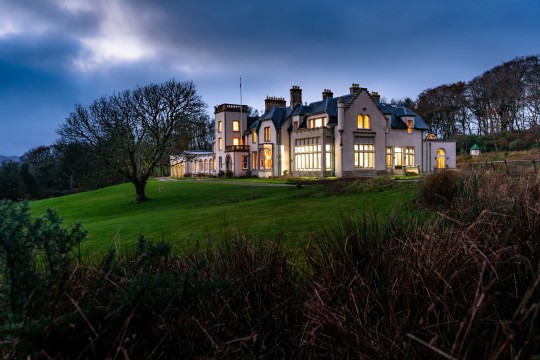BUILDING HOUSES ON SCOTTISH ISLANDS
28th May 2020In the last few years, we’ve worked on architectural projects on eight Scottish islands. These wild and wonderful West Coast locations – Skye, Jura, Islay, Raasay, Lewis, Bute, Arran and Coll – are some of my favourite places to work. For me, the islands are Scotland – windswept, beachy and unbelievably beautiful. Here, you’ll encounter sheep wandering the single-track roads, spot eagles and wild deer, stumble across empty white-sand bays, and hike over sparsely populated hills and glens. That’s before you’ve even started on the local whisky.
I find that clients wanting houses designed and built on the islands are often quite adventurous. You have to have a hardiness about you to live in these places – and plenty of imagination. On one project on Islay, design meetings with the clients involve a 2-hour walk across moorland or a boat trip to their current house at a remote and windswept headland lighthouse. Their new house will be located at the start of that walk at the end of the road. It’s still remote by most people’s standards.
On another, on Bute, the client requested something altogether different. It’s a project to build a gin distillery, bar, café and venue space. Distilling, both for gin and whisky, is big business on Scottish islands, attracting visitors from all over the world. Some of the architecture for newer distilleries is striking and provides a focal point for the island, as well as employment and tourism.
There is a unique etiquette to building property on Scottish islands. It’s important to find out if there is local capacity and skills for building, labour and providing materials. If not, you need to start looking for solutions, which means contractors who are willing to travel. For smaller projects, many won’t be interested and costs can then rise. For larger projects, experienced teams who can deliver good value and quality are needed. We’ve now built up good contacts across many of the islands. On a large estate conversion on Jura, teams of workers came to live on the island for periods of time. The upside of this was that we worked long days because the workers didn’t have to get ‘home’. There was a healthy push to get the job done as well as a successful sense of camaraderie. We had a few fun Friday evenings in the local pub.
In fact, I’d say the Jura project was my favourite. For me, regular island trips offered a spectacular change of scene. But also, the surprising fact of such fabulous ambition on the project was admirable and exciting to be a part of – particularly in such an out-of-the-way location. I also managed the odd stalking and fishing diversion while there.
Getting a cohesive team together is important on any project, but is even more important on the islands when people are travelling there to work. These are often small communities, and keeping good relations between people who live there and others is critical. Projects only work if the relationships work. On one island project, the client’s land agent referred to the project’s ‘circle of love’. This sounds a bit corny, but actually nurturing relationships between the gamekeeper, the friendly local builder, and a number of others was critical. Everyone is trying to make the project happen for the owner. You have to become part of this team.
As the architect you must interpret the client’s brief and understand the level of ambition that the client has. It is likely to have to be a very special place that you are tasked with creating. The fact that it is on an island all adds to that. Often the buildings are built with visitors in mind, and will be the end of a journey for them, far away from the rest of the world. You want them to be delighted by the whole experience.
This is true of a holiday house we’re building on Coll. The design was crucial. The clients had purchased a plot with planning permission but the original design proposal did not fill them with joy. We took over and moved the aspect of the house to accentuate the sea view. The planning department would not have approved a tall house, so we increased the footprint and kept it to a one-and-a-half storey design with the entrance in a connecting hall between two wings on the sheltered side. We also designed in island-friendly details such as an external covered fish-gutting alcove with sink.
Planning requirements are particularly acute on the islands. Understanding the architectural vernacular of each island is important, but so sometimes is pushing the boat out. There are several outstanding modern designs across the Scottish isles. The best projects understand and incorporate traditional materials and styles, which include ancient stone black houses, white cottages and manses, even castles. We worked on a very traditional white cottage style house in the most magnificent location on Skye, where the house sits between a beach and the Red Cuillins. Other successful designs also bring in more modern aspects such as timber, reflective materials and expansive glazing.
In every instance the individual location, setting and history must be taken into account alongside the ambitions of the client. One unusual white timber clad home we designed on the isle of Arran – which has a different atmosphere to the more northerly islands – is more seasidey, with influences from Scandinavian west coast houses and also New England timber designs, featuring a long covered balcony from which to watch the sunset over a glass of wine.
We’re always happy to talk to clients about building on the islands and find the challenge of overcoming location logistics, planning and team issues enjoyable.
Contact us here to discuss your dream Scottish island home.
Read more about the Jura island here.

